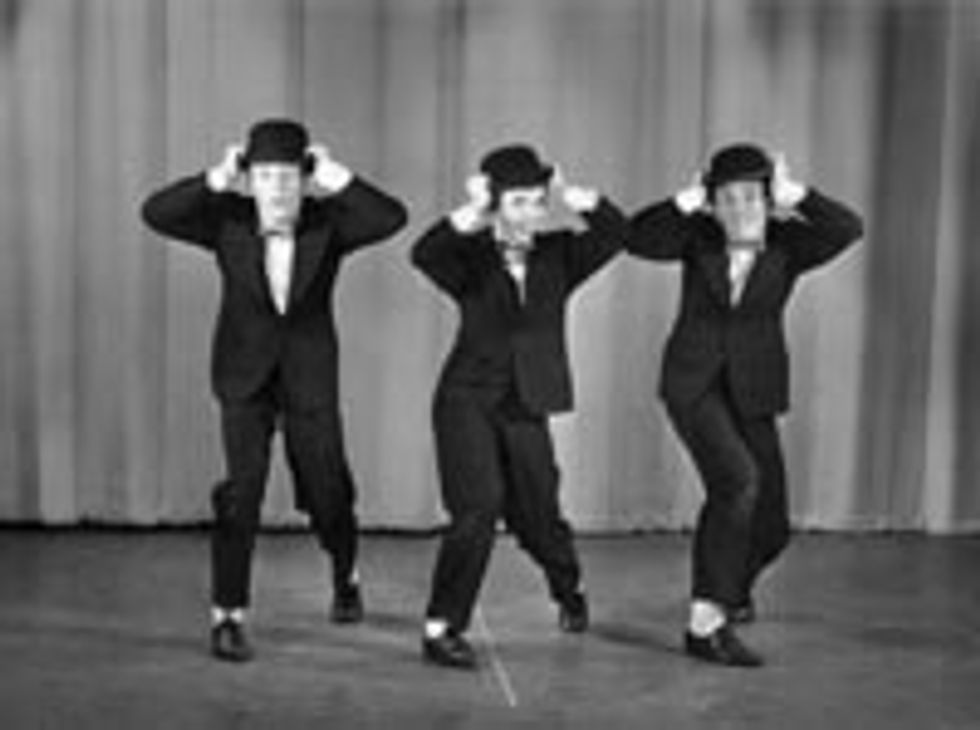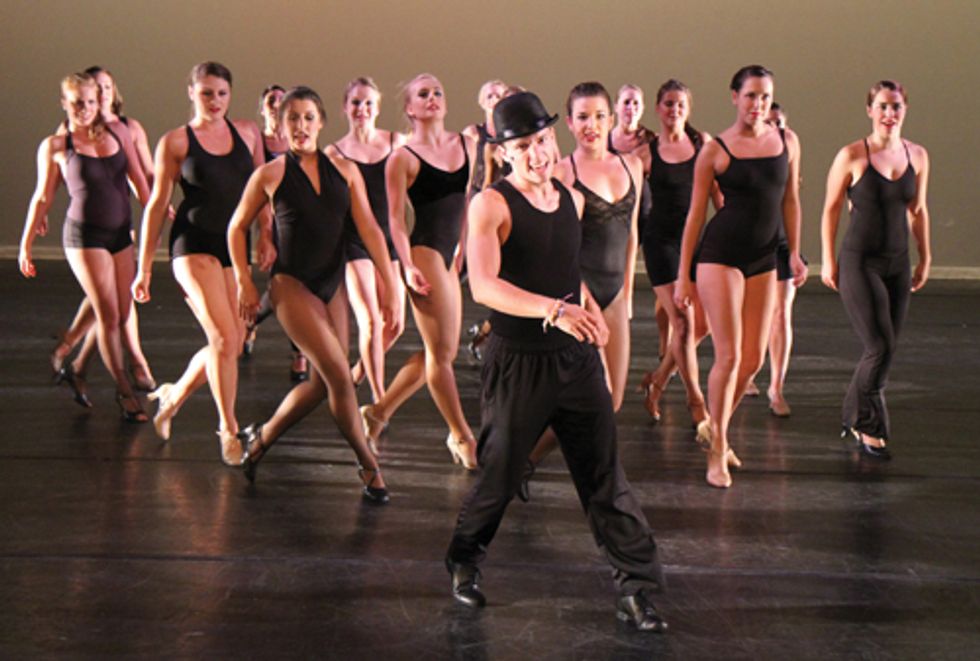And All That Jazz

Layouts. Forced-arch, turned-in pirouettes. Hip and shoulder isolations. The hallmarks of classical jazz dance are easy to recognize, but do you know where these moves actually came from? Jazz came into its own as a style after World War I, but the foundations of jazz dance and music go back much further into American history. Africans shipped to North America as slaves brought with them their performing traditions, and these dances gradually fused with the European, South American and Asian forms practiced in the U.S. to become jazz. Like tap, jazz is an American creation, but because it keeps changing, it’s hard to define. So how did jazz become the artform it is today? DS breaks it down.
1740:
The U.S. government passes a law prohibiting “beating drums and blowing horns.” African-born slaves turn to their bodies as instruments, incorporating the same percussive rhythms.
Mid-to-late 1800s:
In northeastern cities, African and European immigrants share tenement housing and discover similarities between their dance styles. A hybrid, improvised form evolves, fusing the toe-heel work of British jigging and Irish clogging with African dance’s syncopated foot stamping and expressive upper body. These improvised dances start appearing onstage, performed by whites.
1830s–1890s:
The rise of the minstrel show, the first professional performing outlet for African Americans. Two distinct circuits evolve, segregating white and black performers. Both races perform in blackface, presenting numbers like the cakewalk that had evolved from plantation dances. The most celebrated performer of the 1840s is a freeborn black named Master Juba. (Remember him from DS’ tap timeline last month?) He dances with different rhythms in different parts of his body. This style becomes the bedrock of jazz and tap dance—his moves will spawn jazz’s isolations and syncopation.
1890s–1910s:
People of all races and socioeconomic backgrounds flock to vaudeville, supper clubs and tea salons to watch couples perform to ragtime, a precursor to jazz music. African dance–based steps using the torso and hips, like the Grizzly Bear, Turkey Trot and Monkey Glide, become popular. These social dances make it to Broadway by the turn of the 20th century.
1918–1929:
In the Jazz Age, people embrace highly syncopated music and dance, celebrating musicians’ ability to improvise and dancers’ ability to express their individuality. In ballrooms in Harlem, blacks and whites hit the same dance floors. On Broadway, whites flock to Shuffle Along, a groundbreaking all-black musical comedy hit which strikes a blow against black stereotyping. Josephine Baker is part of the innovative chorus, which combines jazz music and dance.
1930s:
The end of the Harlem Renaissance and the onset of the Great Depression. White choreographers are hired in the burgeoning film industry, which is interested in ballet but wants tap, social and “exotic” dance numbers, too. Black artists like Katherine Dunham, who specializes in Afro-Caribbean dance, are hired as assistants.
1936:
George Balanchine’s Slaughter on Tenth Avenue in the Broadway musical On Your Toes marks the successful launch of a long-lasting relationship between ballet and popular dance on Broadway. Balanchine’s elegant, sexy choreography in Slaughter is later identified as jazz. Black tapper Herbie Harper serves as Balanchine’s assistant, giving Ray Bolger, the male lead, a knockout tap number.
1944–1948:
Jack Cole, considered the father of theatrical jazz dance, develops “The Dance Workshop,” a group of highly trained ballet, modern and acrobatic dancers that perform in L.A. nightclubs and theaters. Cole’s study of Indian classical dance, Bharatanatyam, with its isolations and quick directional changes, influences his style. Cole created dances for 11 musicals and 24 films.
1944:
Jerome Robbins choreographs Fancy Free, which blends ballet, swing and soft shoe, for American Ballet Theatre. Robbins later convinces George Abbott to produce a full-fledged Broadway musical from the dance. The smash-hit result: the show (and 1949 film) On the Town.
1945:
Katherine Dunham opens the Dunham School of Dance and Theater in NYC. Her dancer Syvilla Fort teaches shoulder, rib, hip and pelvis isolations while crossing the floor. These moves will become standard practice in jazz classes.
1950:
Michael Kidd, a Brooklyn-born former ABT soloist, choreographs Guys and Dolls, which energetically blends jazz, folk, ballet and acrobatics and wins a Tony for choreography.
1950s:Studios begin offering precursors to what will become jazz class: Freestyle (fast-moving, ballet-based technique initiated by Hollywood choreographer Eugene Loring), Musical Comedy (a style devoted to slapstick movement), Primitive (any style that wasn’t ballet, tap or social dance) and Afro-Caribbean (a form Dunham helped codify after conducting research among African-descended dancers in the Caribbean).
1954:
Bob Fosse, a Chicago-born, self-taught dancer, choreographs his first musical, The Pajama Game. In the number “Steam Heat,” Fosse brings hip grinds, deadpan looks and hat tricks—staples of vaudevillian entertainment—to Broadway.
1955:In Manhattan, Luigi and Matt Mattox begin teaching in the tradition of Jack Cole, emphasizing ballet’s elongated lines and tap’s rhythmic complexity. Their class includes a warm up, across-the-floor sequences and a culminating combination. The modern-day jazz class is born.
1955-1957:
Jerome Robbins conceives, choreographs and directs West Side Story. Robbins’ edgy, graceful and athletic movement fuels jazz dance’s popularity.
1957–1964:Peter Gennaro—former Fosse dancer, co-choreographer of West Side Story and a jazz teacher—appears regularly with his group on television variety shows, captivating home audiences with his jaunty, strutting style and spreading awareness of jazz dance.
Late ’60s to mid ’70s:Jazz dance classes become part of college dance departments. Cholly Atkins, a 1940s virtuoso tap dancer, grooms Motown bands like the Jackson 5 to dance while they sing.
1980s:Rise of music videos in which jazz dance’s overt sexuality finds mass appeal. For pop stars like Paula Abdul and Madonna, dance ability becomes as important as musical talent. On the concert stage, choreographers Twyla Tharp, Danny Buraczeski, Danny Grossman and Garth Fagan are bringing jazz moves to audiences accustomed to ballet and modern dance.
1990:Gus Giordano’s annual Jazz Dance World Congress in Chicago begins, propagating, preserving and developing jazz dance. Since 1990, the event has been presented in Japan, Germany and Mexico, as well as across the U.S., giving dancers access to master classes, panels, performances by jazz companies and more.
2000 and beyond:Jazz is everywhere, from “So You Think You Can Dance” to the competition/convention circuit, and has merged with hip hop, ballet, modern, world dance and more.


